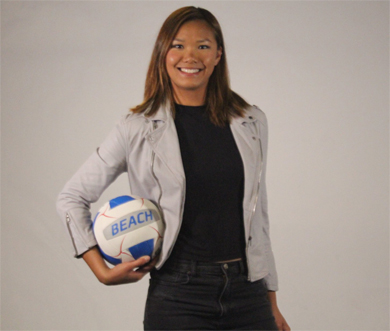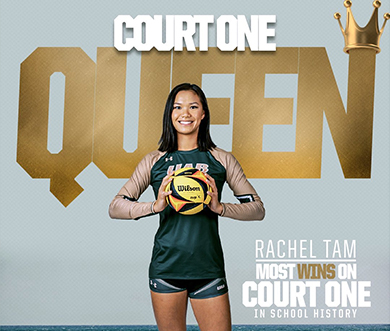Author: Rachel Tam
Published on: May 22, 2023
Over the past 12 years, I have been involved with the sport in multiple roles. I was a volleyball player. I played for the Hong Kong Youth and Adult National Team. I continued to pursue the highest level of volleyball competition and experience by continuing my education in prestigious colleges in the U.S. It was a privilege to be part of NCAA Division I indoor and beach volleyball programs. At the same time, I was a sports performance as well as volleyball skill coach who has been studying how to maximize sports performance for volleyball players.
My interdisciplinary roles allowed me to see volleyball training from so many different perspectives. It allowed me to observe, process and analyze the sports culture in a holistic approach. I want to use this opportunity to express some of the flaws that are imbedded in the U.S. volleyball culture, and hopefully it can act as part of the force to change and better the future of rising volleyball players.

#1: Lack of foundational physical preparedness
In the U.S., at the youth level, the volleyball culture is very competition-centric. Juniors play a tournament every weekend. Youth athletes enjoy a high volume of competitive, realistic volleyball touches. The tradeoff is that there is not enough time to focus on skill training, let alone strength training. With a high frequency of competition at a young age, without a foundation of strength and conditioning, there is an increased risk of injury and decreased performance potential. Youth athletes are constantly under stress and are lacking the time to improve their athletic qualities. One might concern that resistance training at a young age will be more detrimental than beneficial. However, strength training for youth should not be focused on the load. Mastery of the fundamental movement patterns – squat, hinge, upper body push, upper body pull, trunk stability – as well as the basic ABC (agility, balance, coordination) should be the focus. Allocate time for preparation and recovery along with competition to develop greater longevity of volleyball players.
#2: Jump height isn’t everything
Having a high vertical gives you an advantage on attack but doesn’t equate to strong arm swing. As an outside hitter, I understand the emphasis on being able to jump high and swing hard in the culture. Consequently, when you research volleyball strength training, the first things that show up on social media are probably box jumps, hurdle jumps, and all kinds of exercises that gear toward increasing your vertical power. While jumping is a vital part of the game, other aspects of volleyball performance should not be discounted. While we serve or swing, the ability to perform correct rotational sequencing and proper arm mechanics simultaneously generates deadly swing power. I realized that, when I was interning at UAB Sports Performance, Coach Derek dedicated a portion of his training program to developing cognition and the ability to control the separation of the hip and shoulder in his baseball athletes. Even though volleyball is not necessarily a ground-based sport, when hitters are in the air, we still want to be able to open our hips and rotate to close hips to generate torque during an attack. Rotational sequencing is a skill that can be acquired in the weight room and on the court. It can work hand in hand with expressing enhanced performance and decreased risk of injury in the sport.
#3: Diversify arm care
Most volleyball players should be pretty familiar with these exercises: resistance band internal and external rotation, straight arm-raises, lateral raises… While these isolated movements are great, I do not feel that they fully address and get the scapula ready for the demands of the sport. One more thing that I learned during my internship was that “healthy scapula equals healthy shoulder”. Overhead movements in volleyball (even with passing) rely on the ability of the scapula to express its action. If our scapula is not mobile and stable to do that, it restricts us from putting our arms together on passing, lifting our arms on swinging, spreading out arms on blocking, and so on. In the weight room, exercises that challenge the proper function of the scapula should be placed in a volleyball training program. Coupling it with thoracic spine mobility work, which enhances the spine's ability to rotate and extend, can improve the active range of motion of shoulder flexion and improve shoulder movement overall. Ultimately, it’s going to aid the expression of swing mechanics that we mentioned previously. An athlete cannot maximize their potential if we do not change some of the habits in volleyball culture. It is essential to dedicate time to strength training and treat it as important as skill practice. Programs that include hip and shoulder separation as well as multiplanar movement should be in place. Integration of dynamic and multi-joint exercises should be included in the volleyball training routine. There are so many ways that strength training can aid the performance of volleyball athletes. Starting with one constructive habit at a time coupled with consistency can lead to a significant change in one’s volleyball performance.
Rachel Tam set the record for most single season court one wins in school history for the University of Alabama at Birmingham (UAB). Rachel is pursuing physical therapy school, with specialization in sports medicine.








